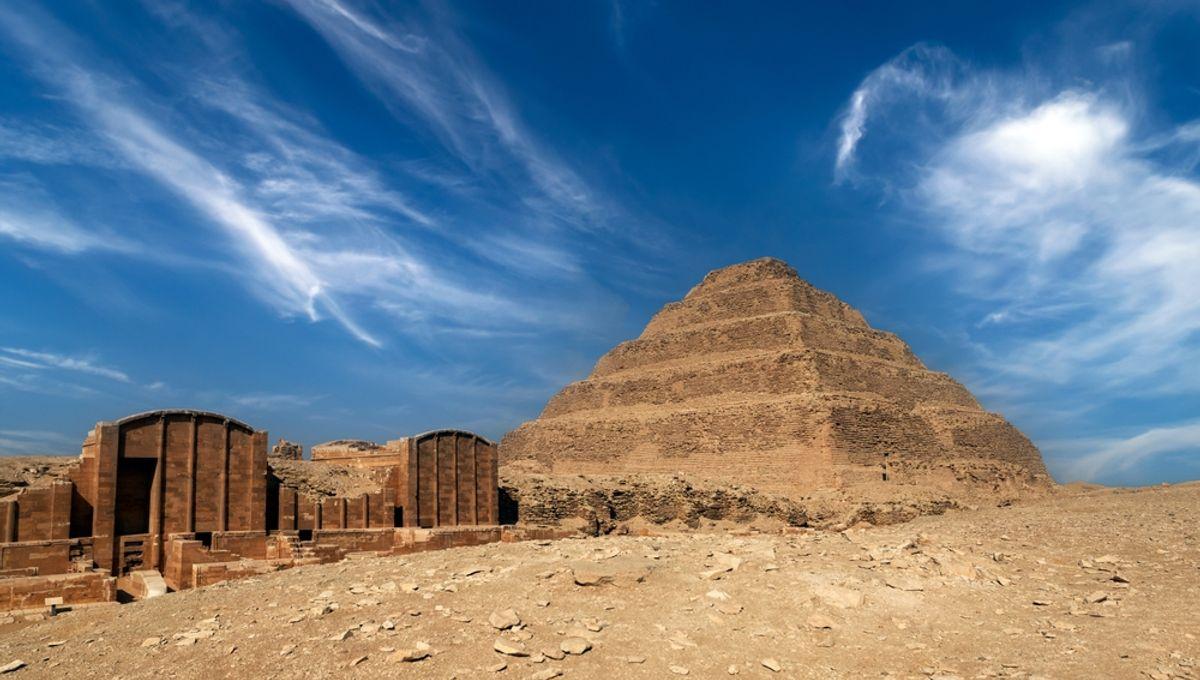-
Новости
- ИССЛЕДОВАТЬ
-
Страницы
-
Статьи пользователей
-
Форумы
Scientists Sequence Oldest Egyptian DNA To Date, From A Whopping 4,800 Years Ago

Scientists Sequence Oldest Egyptian DNA To Date, From A Whopping 4,800 Years Ago
Using the oldest DNA sample from Egypt to date, researchers have extracted and sequenced the entire genome of an adult male who lived in the region between 4,500 to 4,800 years ago, and in doing so have revealed insights into the possible movements of his ancestors.
This is not the first time such an effort has been made. Forty years ago, the Nobel Prize winner, Svante Pääbo, a Swedish geneticist, tried to extract DNA from ancient Egyptian individuals. These individuals were only 2,000 years old, but Pääbo’s work, which was published with little fanfare in the 1980s, paved the way for this latest achievement. The breakthrough was achieved by researchers from the Francis Crick Institute and Liverpool John Moores University (LJMU), who extracted the DNA sample used for whole genome sequencing from the tooth of an individual buried in the village of Nuwayrat, around 265 kilometers (165 miles) south of Cairo. “This individual has been on an extraordinary journey”, Linus Girdland-Flink, senior author, Lecturer in Ancient Biomolecules at the University of Aberdeen, Visiting Researcher at LJMU, said in a statement seen by IFLScience. The individual was donated to the excavation committee set up by British archaeologists, John Garstang, by the Egyptian Antiquities Service while it was under British rule. Initially transported to the Liverpool Institute of Archaeology, it was later transferred to World Museum Liverpool, where, as Girdland-Flink explained, "it then survived bombings during the Blitz that destroyed most of the human remains in their collection." According to Girdland-Flink, the individual “lived and died during a critical period of change in ancient Egypt”, the time between the Early Dynastic and Old Kingdom periods. He was buried in a ceramic pot placed in a hillside tomb; mumification was not a standard practice at the time, and the nature of this previous burial method may have contributed to how well his DNA was preserved. The ancient individual was buried in a ceramic pot that was excavated by British archaeologists during their rule of Egypt. Image credit: Morez, A. (2025) Nature “We’ve now been able to tell part of the individual’s story,” said Girdland-Flink. According to the team's genetic analysis, 80 percent of this individual’s ancestry can be mapped to ancient people who lived in North Africa. But 20 percent of his ancestry was also traced to ancient people living in the Fertile Crescent, especially in Mesopotamia (more or less where Iraq is today). This is a valuable insight, as archaeological evidence for the period this individual lived in suggests trade and cultural connections existed between ancient Egypt and the Fertile Crescent. In the past, objects and imagery have helped establish this idea, but there was no genetic evidence available to support it. Now, however, we have strong evidence indicating that people moved into Egypt and mixed with local populations at this time, though more individual genome sequencing is needed to fully understand variations in ancestry at the time. The Nuwayrat man was discovered in a tomb carved into the hillside, a few hundred miles away from Cairo. Image credit: Morez, A. (2025) Nature Analysis of chemical signals in this person’s teeth related to his diet and environment also indicates that he had likely grown up in Egypt. At the same time, evidence from his skeleton provided information about his age (between 44 and 64 years old), sex, height, and even his lifestyle. His bones had muscle marking from sitting for long periods of time with outstretched limbs, indicating that he may have been a potter or worked in another trade where he would've moved similarly. “The markings on the skeleton are clues to the individual’s life and lifestyle – his seat bones are expanded in size, his arms showed evidence of extensive movement back and forth, and there’s substantial arthritis in just the right foot,” said Joel Irish, second author and Professor of Anthropology and Archaeology at Liverpool John Moores University. “Though circumstantial these clues point towards pottery, including use of a pottery wheel, which arrived in Egypt around the same time. That said, his higher-class burial is not expected for a potter, who would not normally receive such treatment. Perhaps he was exceptionally skilled or successful to advance his social status.” In the future, the team is hoping to work with Egyptian researchers to flesh out the picture of migration and ancestry at the time. “Piecing together all the clues from this individual’s DNA, bones and teeth have allowed us to build a comprehensive picture,” added first author Adeline Morez Jacobs, Visiting Research Fellow at Liverpool John Moores University. “We hope that future DNA samples from ancient Egypt can expand on when precisely this movement from West Asia started.” The study is published in Nature. 



